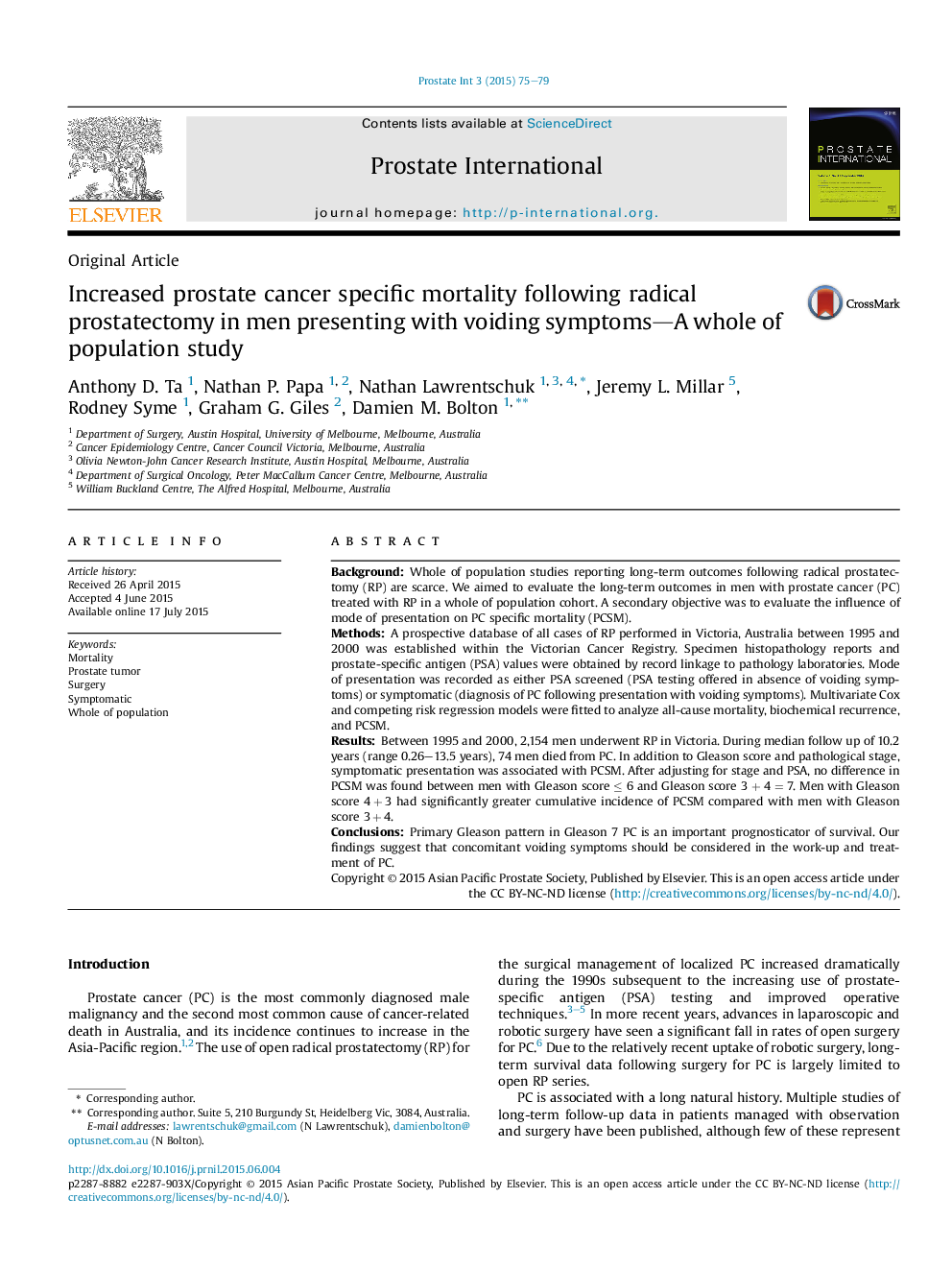| Article ID | Journal | Published Year | Pages | File Type |
|---|---|---|---|---|
| 4274125 | Prostate International | 2015 | 5 Pages |
BackgroundWhole of population studies reporting long-term outcomes following radical prostatectomy (RP) are scarce. We aimed to evaluate the long-term outcomes in men with prostate cancer (PC) treated with RP in a whole of population cohort. A secondary objective was to evaluate the influence of mode of presentation on PC specific mortality (PCSM).MethodsA prospective database of all cases of RP performed in Victoria, Australia between 1995 and 2000 was established within the Victorian Cancer Registry. Specimen histopathology reports and prostate-specific antigen (PSA) values were obtained by record linkage to pathology laboratories. Mode of presentation was recorded as either PSA screened (PSA testing offered in absence of voiding symptoms) or symptomatic (diagnosis of PC following presentation with voiding symptoms). Multivariate Cox and competing risk regression models were fitted to analyze all-cause mortality, biochemical recurrence, and PCSM.ResultsBetween 1995 and 2000, 2,154 men underwent RP in Victoria. During median follow up of 10.2 years (range 0.26–13.5 years), 74 men died from PC. In addition to Gleason score and pathological stage, symptomatic presentation was associated with PCSM. After adjusting for stage and PSA, no difference in PCSM was found between men with Gleason score ≤ 6 and Gleason score 3 + 4 = 7. Men with Gleason score 4 + 3 had significantly greater cumulative incidence of PCSM compared with men with Gleason score 3 + 4.ConclusionsPrimary Gleason pattern in Gleason 7 PC is an important prognosticator of survival. Our findings suggest that concomitant voiding symptoms should be considered in the work-up and treatment of PC.
